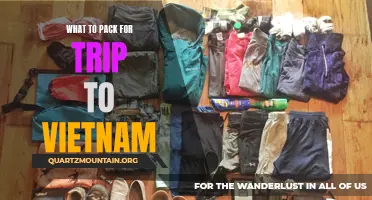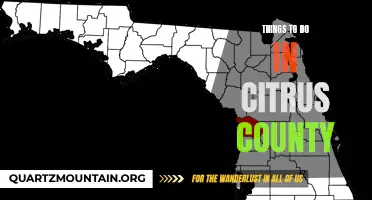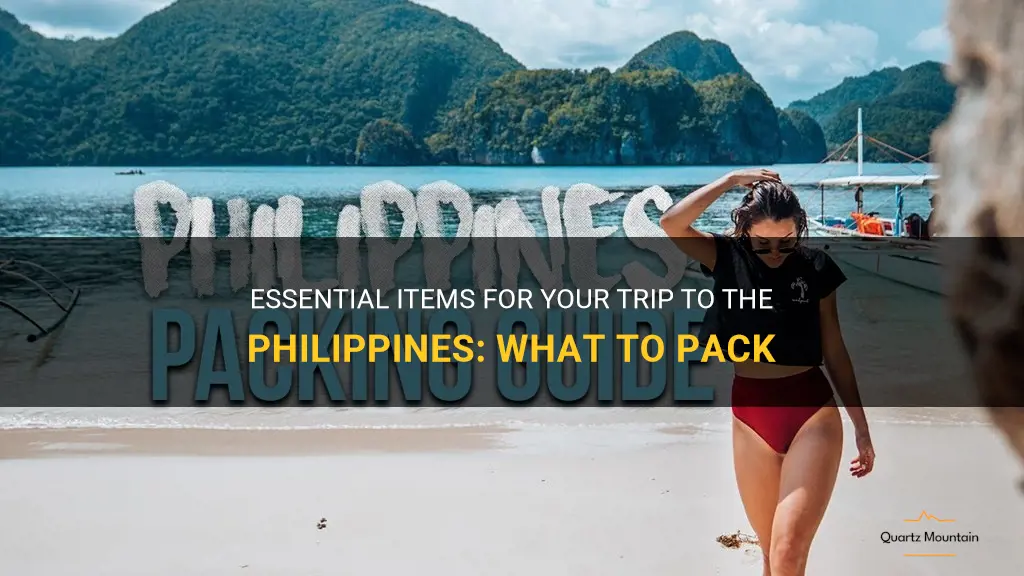
Are you planning a trip to the beautiful archipelago of the Philippines? Whether you're heading to the bustling city of Manila, the tropical paradise of Boracay, or the stunning rice terraces of Banaue, it's essential to pack the right items to make your trip comfortable and enjoyable. In this guide, we'll highlight the must-have essentials for your trip to the Philippines, ensuring you're fully prepared for this unforgettable adventure. From practical items to protect you from the sun and keep you hydrated, to cultural considerations and necessary documents, we've got you covered. So grab your packing list and get ready to embark on the trip of a lifetime in the Philippines!
| Characteristics | Values |
|---|---|
| Climate | Tropical climate |
| Currency | Philippine Peso (PHP) |
| Language | Filipino, English |
| Voltage | 220V |
| Time Zone | UTC+8 |
| Plug Type | Type A, Type B, Type C |
| Dress Code | Modest and respectful |
| Street Food | Wide variety of options |
| Transportation | Jeepneys, tricycles, taxis |
| Water | Bottled water is recommended |
| Healthcare | Adequate healthcare system |
| Safety | Exercise caution |
| Sim Card | Available with local providers |
| Internet Access | Commonly available |
What You'll Learn
- What are the essential items to pack for a trip to the Philippines?
- Are there any specific clothing items or accessories that are recommended for a trip to the Philippines?
- Should I bring any specific medications or health products when traveling to the Philippines?
- What type of footwear is suitable for exploring different terrains in the Philippines?
- Are there any specific travel necessities that I should pack when visiting beaches or islands in the Philippines?

What are the essential items to pack for a trip to the Philippines?
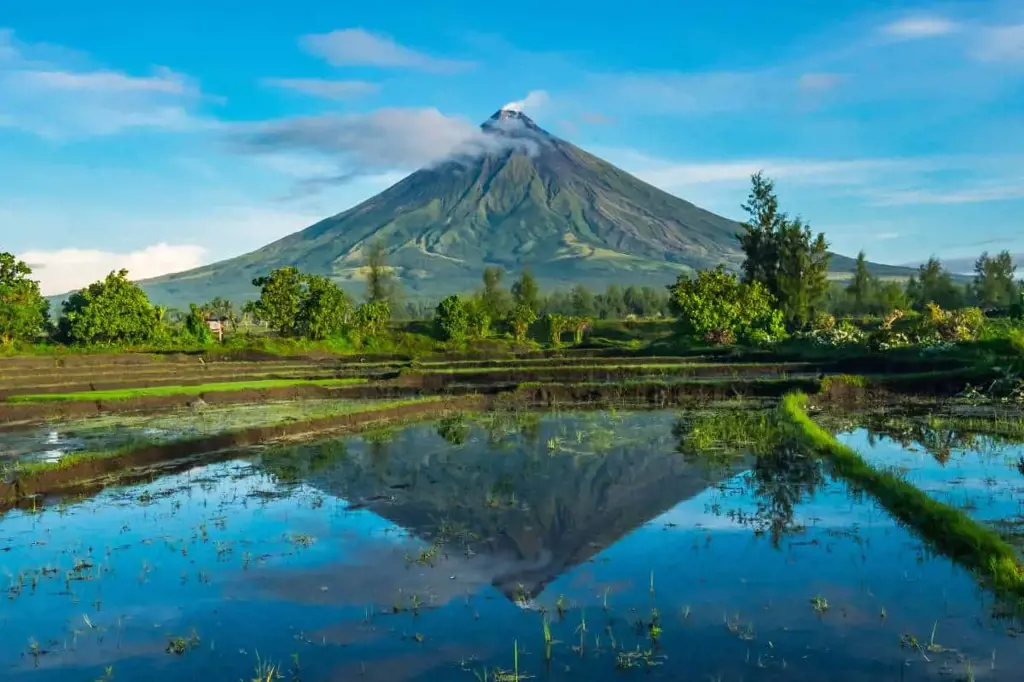
When planning a trip to the Philippines, it is important to pack the essential items to ensure a comfortable and enjoyable experience. Whether you are heading to the beautiful beaches of Boracay, exploring the stunning landscapes of Palawan, or immersing yourself in the vibrant city life of Manila, here are some must-have items to include in your packing list.
- Lightweight and breathable clothing: The Philippines has a tropical climate, with temperatures ranging from 25 to 35 degrees Celsius (77 to 95 degrees Fahrenheit) throughout the year. Pack lightweight and breathable clothing such as cotton shirts, shorts, and dresses to stay cool and comfortable. Don't forget to bring a hat and sunglasses to protect yourself from the sun.
- Swimwear: With its numerous pristine beaches and crystal-clear waters, swimming and snorkeling are popular activities in the Philippines. Make sure to pack your favorite swimsuit or swim trunks so you can fully enjoy the beautiful beaches and warm waters.
- Sunscreen and insect repellent: Protecting your skin from the sun is crucial in the Philippines as the UV rays can be intense. Pack a high SPF sunscreen and apply it regularly to avoid sunburn. Additionally, bring insect repellent to protect yourself from mosquitoes and other insects, especially if you plan on exploring the jungles or staying in rural areas.
- Comfortable footwear: The Philippines is known for its diverse landscapes, including sandy beaches, rocky terrain, and lush forests. Make sure to pack comfortable footwear that can handle these different environments. Flip flops and sandals are great for the beach, while sturdy hiking shoes or sneakers are essential for jungle treks and exploring rocky areas.
- Travel adapter and power bank: The Philippines uses Type A/B/C electrical outlets, so a universal travel adapter will come in handy to charge your electronic devices. Additionally, a power bank is essential for keeping your devices charged, especially if you plan on spending a lot of time outdoors or in areas where power may be limited.
- Medications and personal care items: It's always a good idea to pack any necessary medications and personal care items, such as prescription medications, over-the-counter medicines for common ailments, and toiletries. While these items can be purchased in the Philippines, having them readily available in your luggage can save you time and effort.
- Travel documents and money: Don't forget to pack your passport and any necessary visas, as well as copies of important documents such as travel insurance, hotel reservations, and emergency contact information. It is also advisable to carry a sufficient amount of local currency or have access to a reliable method of payment, as some places may not accept credit cards or foreign currencies.
- Light raincoat or umbrella: The Philippines is prone to occasional rain showers, especially during the rainy season from June to November. Packing a light raincoat or umbrella will come in handy to keep you dry during unexpected downpours.
- Water bottle and reusable shopping bag: To reduce your use of single-use plastic and stay hydrated, bring a reusable water bottle that you can refill throughout your trip. Additionally, a foldable reusable shopping bag can be useful for carrying souvenirs or groceries.
- Sense of adventure and an open mind: Lastly, don't forget to bring a sense of adventure and an open mind. The Philippines is a diverse and culturally rich country, and embracing new experiences and immersing yourself in the local culture will make your trip even more memorable.
In conclusion, packing the essential items for your trip to the Philippines will ensure a comfortable and enjoyable experience. From lightweight clothing and swimwear to sunscreen and insect repellent, these items will help you make the most of your time in this beautiful tropical paradise. Remember to also pack travel documents, medications, and personal care items, and don't leave behind a sense of adventure and an open mind. Happy travels!
Essential Items to Pack for a College Dorm as a Guy
You may want to see also

Are there any specific clothing items or accessories that are recommended for a trip to the Philippines?

When planning a trip to the Philippines, it's important to consider the clothing items and accessories that are recommended for the country's warm and tropical climate. With its beautiful beaches, vibrant cities, and lush landscapes, the Philippines offers a diverse range of activities and attractions that require specific attire. Here are some clothing items and accessories that are worth considering for a trip to the Philippines:
- Lightweight and Breathable Clothing: The Philippines experiences a hot and humid climate, so it's best to pack lightweight and breathable clothing. Opt for materials like cotton and linen that allow air circulation and help wick away sweat. Loose-fitting tops, shorts, dresses, and skirts are ideal for staying cool and comfortable in the tropical heat.
- Swimwear: With numerous stunning beaches and crystal-clear waters, a trip to the Philippines is incomplete without some beach time. Remember to pack your favorite swimwear, including swimsuits, board shorts, and cover-ups. Don't forget to pack a beach towel as well.
- Sun Protection: The Philippines is located near the Equator, which means that the sun's rays can be quite intense. It's essential to protect yourself from the sun's harmful UV rays. Consider packing a wide-brimmed hat, sunglasses, and a good-quality sunscreen with a high sun protection factor (SPF). A lightweight, long-sleeved shirt or a sarong can also provide extra protection from the sun.
- Comfortable Footwear: When exploring the Philippines, you'll likely be doing a lot of walking. Pack comfortable footwear such as walking shoes or sandals with good arch support. Flip-flops are also handy for the beach, but it's recommended to have sturdier footwear for activities like hiking or exploring uneven terrains.
- Rain Gear: The Philippines has a tropical climate, which means it can experience heavy rains and occasional tropical storms, especially during the wet season. Pack a lightweight rain jacket or a foldable umbrella to keep you dry during unexpected downpours.
- Insect Repellent: While most parts of the Philippines are not heavily infested with mosquitoes, it's still a good idea to pack insect repellent, especially if you plan on exploring rural areas or going on jungle treks. Look for a repellent with a high concentration of DEET for maximum protection against mosquitoes and other biting insects.
- Light Layers: Although the Philippines is generally warm, some areas, such as the highlands or air-conditioned spaces, can get chilly. Pack a light sweater or jacket for these occasions. Additionally, having a scarf or shawl handy can be useful for keeping warm and covering your shoulders if you plan on visiting religious sites.
- Dry Bag or Waterproof Phone Case: If you plan on participating in water activities such as snorkeling or kayaking, it's wise to have a dry bag or a waterproof phone case to keep your belongings safe and dry. This way, you can enjoy the water without worrying about damaging your electronic devices or important documents.
In conclusion, when traveling to the Philippines, it's important to pack clothing items and accessories suitable for the country's warm and tropical climate. Lightweight and breathable clothing, swimwear, sun protection, comfortable footwear, rain gear, insect repellent, light layers, and a dry bag or waterproof phone case are recommended for a comfortable and enjoyable trip. By being prepared with the right attire, you can fully experience all that the Philippines has to offer.
Uncovering the Essentials: A 5-Day Guide to Packing for the Hunt
You may want to see also

Should I bring any specific medications or health products when traveling to the Philippines?

When traveling to the Philippines, it is important to be prepared with the necessary medications and health products to ensure a safe and healthy trip. Here are some recommendations on what to bring:
- Prescription Medications: If you are currently taking prescription medications, make sure to bring an ample supply to last you throughout your trip. It is also advisable to carry a copy of your prescription or a letter from your doctor stating the medical necessity of the medication, as some countries may require it for customs purposes.
- Over-the-Counter Medications: It is always a good idea to have a basic first-aid kit with over-the-counter medications such as pain relievers, antihistamines, and anti-diarrheal medications. These can come in handy for minor illnesses or discomforts while traveling.
- Gastrointestinal Medications: Travelers to the Philippines should be cautious about food and water safety to avoid gastrointestinal issues. However, it is still recommended to bring medications for diarrhea, such as loperamide, as a precautionary measure.
- Insect Repellent: The Philippines is known for its tropical climate and can be prone to mosquito-borne diseases such as dengue fever and malaria in certain areas. Bringing an insect repellent containing DEET can help protect you from mosquito bites and reduce the risk of contracting these diseases.
- Sunscreen: The Philippines is a tropical destination with plenty of sunshine, so it is essential to protect your skin from the harmful effects of the sun. Make sure to bring a sunscreen with a high SPF to shield your skin from UVA and UVB rays.
- Personal Hygiene Products: It is always advisable to bring your preferred personal hygiene products, such as hand sanitizer, wet wipes, and any specialty items you may require. While these items are generally available in the Philippines, having them on hand can offer peace of mind.
- Travel Insurance: Although not a medication or health product per se, having travel insurance is highly recommended when visiting any foreign country. It can provide coverage for medical emergencies, trip cancellations, and other unforeseen events, ensuring you are adequately protected during your trip.
Remember to consult with your healthcare provider or travel medicine specialist before traveling to the Philippines. They can provide personalized advice based on your medical history and destination-specific risks.
In conclusion, bringing specific medications and health products can help ensure a safe and healthy trip to the Philippines. Remember to pack prescription medications, over-the-counter medications, gastrointestinal medications, insect repellent, sunscreen, personal hygiene products, and consider obtaining travel insurance for added peace of mind. By being prepared, you can focus on enjoying your trip to this beautiful country.
Essential Items to Pack for a Memorable Trip to Delhi
You may want to see also

What type of footwear is suitable for exploring different terrains in the Philippines?

When exploring the diverse terrains of the Philippines, it is important to have the right footwear to ensure comfort, safety, and convenience. The Philippines boasts a variety of terrains, from sandy beaches and lush mountains to rocky trails and muddy fields. Each type of terrain requires specific footwear to provide the necessary support and protection. In this article, we will discuss the various types of footwear suitable for exploring different terrains in the Philippines.
Hiking Boots:
For mountainous terrains and rocky trails, a pair of sturdy hiking boots is essential. These boots are designed with ankle support, cushioning, and durable outsoles that provide excellent traction on uneven surfaces. Additionally, hiking boots are usually waterproof or water-resistant, which is advantageous when crossing streams or hiking through rainy weather. The extra cushioning and support in hiking boots help prevent injuries and minimize fatigue, making them perfect for long hikes in the mountains.
Water Shoes/Sandals:
When exploring the beautiful white sandy beaches and coral reefs of the Philippines, water shoes or sandals are a great choice. These shoes are designed to provide protection and grip in wet environments. They are typically made of quick-drying, lightweight materials with non-slip soles, allowing for easy movement on both wet sand and slippery underwater rocks. Water shoes/sandals also protect your feet from sharp shells and rocks, ensuring a comfortable and safe beach experience.
Trail Running Shoes:
For those who prefer a more adventurous and faster-paced exploration, trail running shoes are a suitable choice. These shoes are specially designed for off-road running and provide excellent traction on various terrains, including muddy trails and slippery surfaces. Trail running shoes are light and flexible, allowing for agile movement while still providing enough support and stability to prevent ankle sprains and other injuries. They are optimal for exploring forested areas and muddy trails in the Philippines.
Espadrilles:
For casual and leisurely exploration of cities and towns, a pair of espadrilles is a stylish and comfortable option. Espadrilles are lightweight, canvas or cotton shoes with a rubber or jute sole. They offer breathability and flexibility, making them ideal for walking on paved or urban terrains. Espadrilles come in various trendy designs, allowing you to look fashionable while exploring the vibrant streets and cultural attractions of the Philippines.
Trekking Sandals:
For those who want the best of both worlds - the breathability of sandals and the support of hiking boots - trekking sandals are a great choice. These sandals are designed with adjustable straps, cushioned footbeds, and rugged outsoles, making them suitable for a wide range of terrains. Trekking sandals provide ventilation, quick-drying capabilities, and protection for your feet. They are perfect for hiking through rivers, exploring waterfalls, and other moist environments in the Philippines.
In conclusion, the diverse terrains of the Philippines require specific footwear for different types of exploration. Whether you are hiking in the mountains, exploring the beaches, running on trails, strolling in cities, or venturing through wet landscapes, there is a suitable footwear option available. Remember to choose footwear that provides the necessary support, traction, and protection for each specific terrain, ensuring a comfortable and safe exploration experience in the beautiful Philippines.
Essential Items to Pack for a Memorable Family Holiday
You may want to see also

Are there any specific travel necessities that I should pack when visiting beaches or islands in the Philippines?
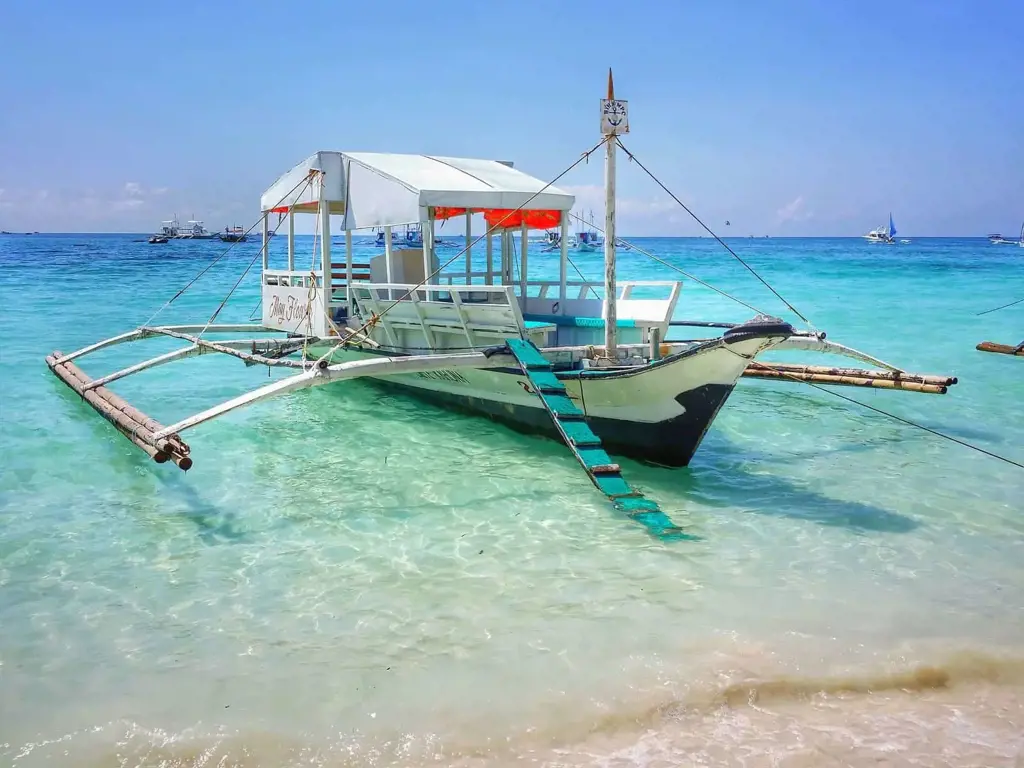
When planning a trip to the beaches or islands in the Philippines, there are a few key travel necessities that you should pack. These items will ensure that you have a comfortable and enjoyable experience while exploring the stunning beaches and islands.
- Sunscreen: The Philippines is known for its beautiful, sunny weather. However, with the strong tropical sun, it's crucial to protect your skin from harmful UV rays. Make sure to pack a high SPF sunscreen to prevent sunburn and potential skin damage.
- Bug repellent: Many beaches and islands in the Philippines are surrounded by lush vegetation, which can attract mosquitos and other insects. To avoid getting bitten and potentially contracting mosquito-borne diseases such as dengue or malaria, it's essential to pack a good bug repellent.
- Swimwear: Don't forget to pack your favorite swimsuits and swim trunks! The Philippines is home to some of the most breathtaking beaches in the world, and you'll definitely want to take a dip in the crystal-clear waters. Whether you prefer a one-piece, bikini, or board shorts, make sure to pack enough swimwear to enjoy the beach to the fullest.
- Water shoes: Some beaches in the Philippines may have rocky or uneven seabeds, so it's a good idea to pack water shoes or sandals with good grip. This will protect your feet from sharp rocks or coral and make it easier to explore the underwater wonders without getting injured.
- Sandals or flip-flops: A pair of comfortable sandals or flip-flops is a must-have for any beach or island trip. They are easy to slip on and off, perfect for walking on sandy shores or exploring the nearby beach bars and restaurants. Make sure to choose a pair that is sturdy and offers good support for long walks.
- Lightweight clothing: The Philippines has a tropical climate, so it's best to pack lightweight, breathable clothing. Opt for loose-fitting shirts, shorts, and dresses made from natural fabrics such as cotton or linen. These materials will keep you cool and comfortable in the hot and humid weather.
- Hat and sunglasses: Protect your face and eyes from the intense sun by packing a wide-brimmed hat and sunglasses. These accessories will provide shade and reduce the risk of sunburn or eye damage. Look for sunglasses with UV protection to ensure maximum safety for your eyes.
- Snorkeling gear: The Philippines boasts incredible marine biodiversity, and snorkeling is a popular activity in many beach and island destinations. If you have your own snorkeling gear, be sure to pack it. If not, some beach resorts or local tour operators may provide rental gear, but it's always best to bring your own for comfort and hygiene reasons.
- A dry bag: To protect your electronics and other valuable items from getting wet, consider packing a waterproof dry bag. This will come in handy if you plan on going swimming, kayaking, or participating in any water activities. You can keep your phone, camera, wallet, and other essentials safe and dry.
- A reusable water bottle: Staying hydrated is essential, especially when spending time under the sun. Bring a reusable water bottle and refill it frequently to stay hydrated throughout your beach or island adventures. It's also an eco-friendly choice as it helps reduce plastic waste.
Packing these travel necessities will ensure that you have a memorable and enjoyable beach or island experience in the Philippines. Don't forget to do some research on the specific destination you're visiting to ensure you're prepared for any additional requirements or activities unique to that area.
Essential Items to Pack for a 5-Day Cruise to Cozumel
You may want to see also
Frequently asked questions
When packing for a trip to the Philippines, it is important to consider the tropical climate and the activities you plan on doing. Be sure to pack lightweight and breathable clothing, such as shorts, t-shirts, and dresses made from natural fabrics like cotton or linen. Don't forget to pack a hat, sunglasses, and sunscreen to protect yourself from the strong sunlight. You should also pack a swimsuit, as there are many beautiful beaches and swimming spots in the Philippines. It is also a good idea to bring bug spray and a lightweight raincoat or umbrella, as the country can experience sudden rain showers.
There are a few specific items that you should bring when traveling to the Philippines. First and foremost, make sure to pack a universal travel adapter, as the power outlets in the Philippines may be different from what you are used to. It is also a good idea to bring a reusable water bottle, as tap water in the Philippines is generally not safe to drink. Instead, you can fill up your water bottle with filtered or bottled water to stay hydrated. Additionally, if you plan on going snorkeling or diving, consider packing your own snorkel gear, as rental equipment may not always be of the best quality.
When traveling to the Philippines, it is best to leave expensive jewelry and flashy accessories at home. While the country is generally safe for tourists, it is always better to avoid attracting unnecessary attention to yourself. It is also not necessary to bring a large amount of cash, as credit cards are widely accepted in major cities and tourist areas. However, it is advisable to carry small amounts of cash for smaller establishments or when traveling to more remote areas where card payments may not be accepted. Lastly, avoid packing bulky or unnecessary items, as you will need to carry your luggage around during your trip. Keep your luggage lightweight and easy to manage.




